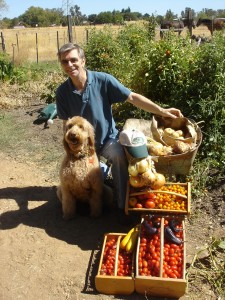In the words of my fellow Lancastrian John Lennon,
“So this is Christmas and what have you done?”
The season is winding down, leaving retailers with well picked-over inventories. Hopefully yours is reduced to a mix of a few “high-risk” lines that looked so interesting at the Market last January and the re-orders of local or fresh stuff for those last-minute shoppers.
What’s Hot, What’s Not?
Reports from across the country seem to indicate a better season than 2011 in overall sales with a slight uptick in average customer spend but slightly lower margin dollars at the end of everything. Owners and managers I have talked to suggest that it has been a strong season for live greenery (better called “Recently Live” greenery?) such as wreaths, roping, garland, fir boughs, porch pots and so on as well as seasonal color like Poinsettias, Christmas cactus and so on. The downside seems to be a weaker demand for permanent (i.e. never-was-live?) Christmas Trees (which I heard was also a problem for the big box stores this year) and holiday ornaments to put on the trees.
Collecting ornaments may be over for now as homeowners concentrate on porch, hallway and room décor rather than the actual tree. Surprisingly strong (according to my informal/not-statistically-valid retail survey) seems to be “Home and Gift” but not necessarily Christmas themed: lamps, prints, tableware, linens, etc. and in particular personal things like apparel, jewelry, purses and shoes. The latter category, which I call “Self-Gifting” or the “I deserve it department” is something I have noticed growing strongly over the last 4 years of economic stress. Similarly anything to do with a pet, birds or nature in general also seems strong this year.
In the plant departments, the race to the bottom on Poinsettia pricing continues though some enterprising garden centers have managed to re-establish value by using clever location names (e.g., “Hearthside” instead of “10 inch”.) Porch pots are increasingly looked for by the public, while Hellebores are making a bit of a comeback and florist grade white or pink Hydrangeas look really good when sold with all the red stuff like Cyclamen, Azaleas and Cactus. Cut trees are another victim of bottom-headed prices. They are too easy to get, set up, sell and get out of to be a high profit line in this day and age, sorry, and at least one well known Garden Center has leased its cut-tree department to a local specialist.
Connecting the dots….
Coincidentally, I read an excellent analysis of the current retail world last week which (by tracing the decline of Best Buy) was cataloging the on-line challenge faced by Category Killers. In particular, Megan McArdle cited how Amazon can be low-cost and responsive yet with such a huge inventory selection that even the biggest big boxes can’t beat. So I began wondering if this was the way we are going to first notice how on-line shopping was impacting the retail garden business?
Now I know that bloggers can take 2 statistics, add 2 more and make 5 but I have been thinking…! Is the success this Christmas in hard-to-ship fresh greens, blooming plants and heavy pots a sign that the public will continue to buy a product they really want to see, feel and sniff in a brick & mortar store?
It seems yes. But what about all the décor and personal products like prints or tableware, or jewelry and purses, surely they are nationally-known brand names available on-line? While I think I can argue that enough consumers still want to see what they look and feel like in person (to justify you carrying them), or in fact are simply browsing waiting for inspiration to strike and thus not able to shop online, this category also has many unknown or artisan brands locally made or regionally but not nationally famous.
That little bit of local might be the salvation of this department, even if most of the volume is from brand names. And when it comes to the self-gifting business surely many consumers simply want to enjoy the self-gifting experience as an opportunity to escape or just reflect in their own moment. Giving yourself an hour to stroll through a warm greenhouse or store with the fragrances and sounds of Christmas is the very essence of a self-gifting experience and certainly beats endless shifting from screen to screen only to find the famous “On back-order” message. (Though admittedly though you do still have to get dressed for shopping in public!)
So, local, fresh, unique, different, experiential – call it what you will – Christmas seems alive and well if you as a retailer can make it your own.
“So this is Christmas, I hope you have fun, another year over and what have you done?”
Share your results, differentiating strategies, and experiences in the comments section below – consider it your Christmas gift to this blogger.
** Photo credit: Ian Baldwin, taken at Orchard Nursery & Garden Center (CA)







Recent Comments